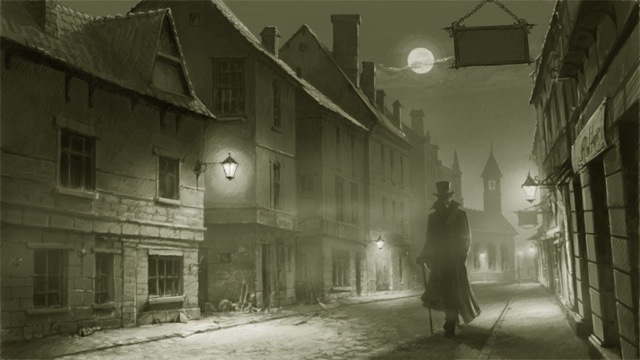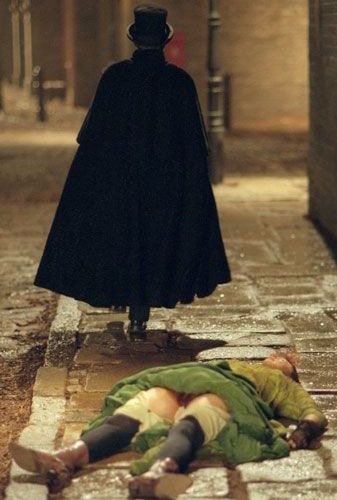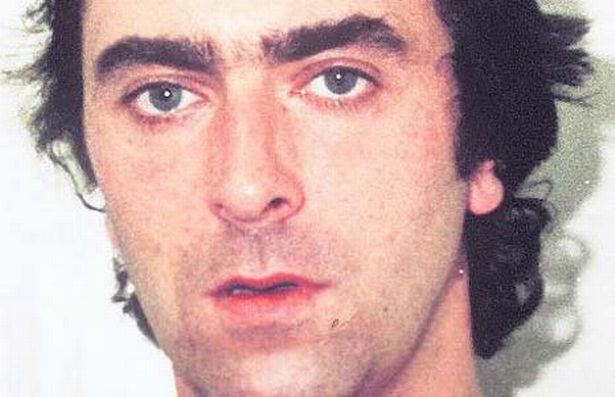
THE Jack the Ripper mystery that has kept the world enthralled since the killer first struck on the streets of Victorian London has been blown apart on the 125th anniversary of the grisly crimes by a former murder squad detective.
The British nation’s most notorious serial killer never existed!
He was just dreamed up by a drunken journalist called Thomas Bulling who wrote a forged letter to Scotland Yard in 1888 pretending to be “Jack” so he could obtain a scoop.
More than 300 books and dozens of films and TV programmes have named in excess of 100 different men, often on the flimsiest of evidence, as the serial murderer who slashed the throats of five women who he then disembowelled, bringing terror to the gas lit streets of Whitechapel.
The suspects have included everyone from Queen Victoria’s grandson the Duke of Clarence to Alice in Wonderland author Lewis Carroll.
Some even said a Sioux Indian warrior called Black Elk, who toured Britain with Buffalo Bill’s Wild West Show in the 1880s, was the guilty man. Others believed child charity campaigner Dr Barnardo was “Jack”.
But Trevor Marriott, a former murder squad detective with Bedfordshire police, has spent 11 years carrying out a detailed cold-case review of the killings, he has trawled Scotland Yard’s files and used modern-day police techniques backed up with state of the art forensic analysis.
“The facts of this case have been totally distorted over the years,” said Mr Marriott.
“The general public have been completely misled by any number of authors and publishers.
“Jack is supposed to be responsible for five victims, but there were other similar murders before and after the ones attributed to him, both in this country and abroad in America and Germany.”

In total Mr Marriott has discovered 17 unsolved Ripper-like murders committed between 1863 and 1894. He believes a German merchant seaman called Carl Feigenbaum was responsible for some, but not all of those killings.
Feigenbaum was a crew member on ships that regularly docked near Whitechapel. He was executed in New York in 1896 after being caught by US police fleeing the scene of a Ripper-style murder there.
“The reality is there was just a series of unsolved murders and they would have sunk into oblivion many years ago, but for a reporter called Thomas Bulling,” said Mr Marriott.
Bulling was a drunken journalist with many police contacts at Scotland Yard, who in 1888 was working for the London-based Central News Agency. He was paid to supply crime stories for newspapers.
“Police got a letter that Bulling had written about the murders which he signed ‘Jack the Ripper’,” said Mr Marriott.
“It was the most ingenious piece of journalism that has kept this mystery alive for 125 years. Even now any modern-day serial killer is called a ‘Ripper’.
“You have to ask yourself if ‘Jack’ is an urban myth. Around 80 per cent of the books about him have a picture of a chap on the front stalking the streets of London in a long black cape and a top hat.
“They were the clothes of an upper class, wealthy man. But back in 1888 if someone dressed like that had actually walked around Whitechapel in the dead of night they wouldn’t have lasted five minutes.
“It wasn’t just one of the most crime-riddled areas of London, it was one of the worst areas in the country. It’s a false image that has been created by the likes of Hollywood film makers.
“New facts have come to light, we’ve now disproved the claim that the killer removed organs from the victims at the scenes of the murders, the organs were removed later once they were in a mortuary.
“There just isn’t a Jack The Ripper as such.”
But the interest in the Ripper murders is still so strong that just this month the East London Advertiser, the newspaper that covers the Whitechapel area published a 12-page souvenir pull out to mark the 125th anniversary of the crimes.
Originally posted 2013-12-25 14:37:13. Republished by Blog Post Promoter

![20131225-153312[1]](https://coolinterestingnews.com/wp-content/uploads/2013/12/20131225-1533121.jpg)












